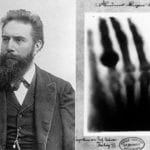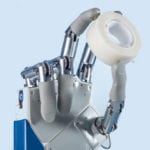 Movies and TV
Movies and TV  Movies and TV
Movies and TV  Crime
Crime 10 Social Media Stunts That Ended in Arrests or Worse
 Weird Stuff
Weird Stuff 10 Super Unsettling Finds Dug Up at the Jamestown Colony
 Crime
Crime 10 Surprisingly High-Tech Crimes That Did Not Involve Hacking
 Books
Books 10 Reasons Dickens Would Love “The Muppet Christmas Carol” Adaptation
 Space
Space The 10 Largest Moons of Our Solar System
 History
History 10 Gross Facts That Confirm the Middle Ages Were Beyond Filthy
 Miscellaneous
Miscellaneous 10 Little Known Search Engines That Aren’t Google
 Miscellaneous
Miscellaneous 10 Surprising Historical Origins of Christmas Traditions
 Pop Culture
Pop Culture 10 Heroes Who Have Battled Evil Versions of Themselves
 Movies and TV
Movies and TV 10 Adaptions of “A Christmas Carol” That Missed the Mark
 Crime
Crime 10 Social Media Stunts That Ended in Arrests or Worse
 Weird Stuff
Weird Stuff 10 Super Unsettling Finds Dug Up at the Jamestown Colony
Who's Behind Listverse?

Jamie Frater
Head Editor
Jamie founded Listverse due to an insatiable desire to share fascinating, obscure, and bizarre facts. He has been a guest speaker on numerous national radio and television stations and is a five time published author.
More About Us Crime
Crime 10 Surprisingly High-Tech Crimes That Did Not Involve Hacking
 Books
Books 10 Reasons Dickens Would Love “The Muppet Christmas Carol” Adaptation
 Space
Space The 10 Largest Moons of Our Solar System
 History
History 10 Gross Facts That Confirm the Middle Ages Were Beyond Filthy
 Miscellaneous
Miscellaneous 10 Little Known Search Engines That Aren’t Google
 Miscellaneous
Miscellaneous 10 Surprising Historical Origins of Christmas Traditions
 Pop Culture
Pop Culture 10 Heroes Who Have Battled Evil Versions of Themselves
10 Facts That Will Change How You View Thomas Edison
Edison has long been a staple of school history books, and most people know him as the inventor of the lightbulb. But in recent years, Edison has become an extremely controversial figure. As the Information Age entered full swing, people started questioning everything, and many people started saying that Edison does not deserve as much credit as people give him. Around the same time, a Tesla revival movement kicked off to honor the mad Serbian scientist. Unfortunately, this movement decided that Tesla couldn’t be built up without tearing Edison down. This has led to a plethora of misinformation about Edison spreading around the Internet, leading to massive confusion about the man who brought us the first phonograph. While Edison wasn’t perfect, he was hardly the mustache-twirling villain some people claim he was, and his rivalry with Tesla was not all it’s cracked up to be.
10The Confusion Over His Credit for the Lightbulb
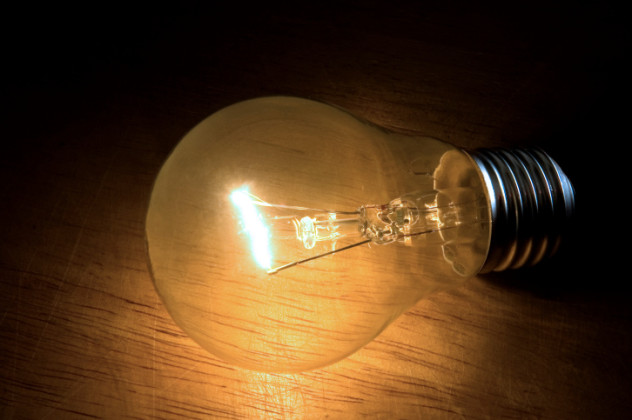
Many people were taught when they were young that Thomas Edison invented the lightbulb, and when they were older, the Internet told them they were wrong. Now, many confused people wonder what exactly is going on and what all the confusion is about. Well, as it turns out, with many things, the answer is a little complicated. And, as is often the case with inventions, more than one person deserves credit. Back in 1875, two men named Woodward and Evans designed a primitive lightbulb that they patented, but they could never make money to experiment with it properly and come up with a good, working prototype. Around the same time period, another man named Joseph Swan was also working on a lightbulb. That was when Edison entered the story. He saw potential in the lightbulb idea and purchased the rights from Woodward and Evans.
While multiple people were working on something similar, and he bought the rights to the idea, Edison and his researchers still spent years in the laboratory to make the lightbulb into something worth using. Edison did not invent the lightbulb, but he was the first to make one that lasted long enough to be used for any practical purposes. His first attempts lasted a little over half a day, but eventually his efforts led to a bulb that could burn for 1,200 hours. We also tend to take for granted all the little switches and fuse boxes that make the lightbulb work and keep us from electrocuting ourselves—that was Edison’s work too.
9Direct Current Is Actually Extremely Useful and Could Make a Comeback

Many people think that alternating current (AC) beats direct current (DC), which was the end of the story. Also, as it has become a part of the Tesla versus Edison narrative, it has reached a point where it’s almost seen by some people on a moral scale—as in, right versus wrong. However, while alternating current did beat out direct current for many things, and it is still the main system used to deliver our power, the truth is that DC is actually better for some applications. And it is used very commonly today. For example, nearly all of our cell phones, computers, and other electronic devices charge using DC power—they all require a DC adapter to plug into the wall.
Also, in some cases, new wind turbines and other technology are actually using DC power. Then the energy companies are going to great expense—and wasting energy—to convert it back to AC power because that’s still how the grid is set up. This has led some companies to start heading toward the possibility of switching back to DC power again. One of the biggest problems with DC was that it was hard to move the power over long distances, but if the distance isn’t a big issue, DC is often more efficient when it comes to power use. Not only has DC never stopped being useful, but there is reason to believe it may start to make a comeback in the next few years and could end up one day being used more than AC power overall. Perhaps one day, Edison will win the war of the currents after all.
8His Rivalry With Tesla Is Greatly Exaggerated
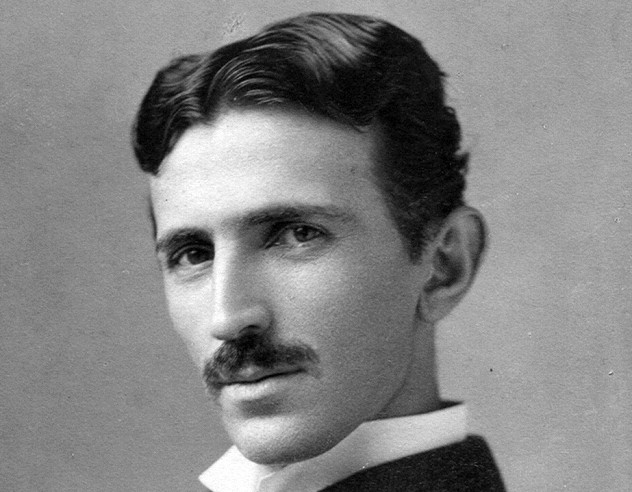
Most people love a good hero versus villain story, and so it goes that people have spun the rivalry between Tesla and Edison into a tall tale. As it often happens, the truth is much more complicated to properly ascertain and was likely not nearly as intense as most people imagine. The story goes that when Edison was first working on his DC system, he asked a young engineer for help making a better system, and Tesla came up with an AC system instead. According to Tesla, Edison offered him a large sum of money for the work and then told him it was a joke when Tesla requested the payment later.
We do know Edison told the young inventor that his ideas were “splendid” but “utterly impractical.” Tesla was always a very sensitive soul, and having his ideas rejected by one of the best-known inventors of the day did not sit well with him.
While Tesla always claimed he left the company after Edison laughed off his promised bonus, Edison’s secretary tells a different version where Tesla left after his immediate boss (not Edison) refused him a small raise. At the time, Tesla was a relatively low-level employee in Edison’s company, which the proud Tesla likely had trouble accepting.
While there was certainly some bad blood for a while, there is little historical evidence that either of them spent a large amount of time ruminating on the other. They were both busy inventing things and promoting their ideas. Once Tesla sold most of his AC rights to Westinghouse, the battle for the currents was mainly between Westinghouse and Edison, while Tesla worked on other pet projects in his own right.
Also, while it’s impossible to know for sure the veracity of the story or how much they really disliked each other, Tesla once said later about Edison, “I was amazed at this wonderful man who, without early advantages and scientific training, had accomplished so much. I had studied a dozen languages, delved in literature and art, and had spent my best years in libraries . . . and I feel that most of my life has been squandered.” Edison also once offered to let Tesla use some of his laboratory space in New Jersey after one of Tesla’s labs burned down. While this is not evidence they were friends or ever settled their differences, it does suggest that their rivalry was more complicated and probably a lot less hateful than many people think.
Edison’s real rival was the powerhouse George Westinghouse (pictured), who had originally made his fortune by designing air brakes for trains. After that, he took an interest in electrical power systems and formed his own company. There is an apocryphal story that claims that Westinghouse once came to Edison with some interesting ideas, and he was snubbed by Edison, who said he should stick only to air brakes and not mess with electricity. The legend claims that then Westinghouse literally started his company out of spite. In actuality, Westinghouse was already quite interested in the subject when he visited Edison’s lab in Menlo Park, New Jersey. At the time, they were quite cordial with each other.
It was only when Westinghouse started a seriously competing business that Edison started to get truly annoyed, and some historians say he never actually hated Westinghouse or Tesla, but he was passionate about what he had invented and would do whatever was necessary to see it come to life. Some people believe Edison was acting in bad faith. Still, some historians think that Edison was so blinded by his discovery and the time and energy he had invested in it that he truly believed AC was dangerous and could not see the superiority of the system he opposed.
7Ahead of His Time: Proponent of Electric Vehicles
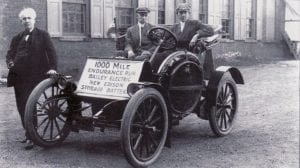
Back when the automobile was first introduced, electric cars outsold their internal combustion counterparts. Still, the lead-acid batteries that powered these vehicles featured several limitations: not only were they very heavy, but the acid from the battery would also corrode the car’s interior. Edison was among the first scientists focused on developing a better alternative. However, the project proved to be his most challenging undertaking. Despite being released with substantial fanfare and bold claims of superior performance, Edison’s batteries were plagued by many shortcomings. They were eventually outpaced in the automobile market by the arrival of Henry Ford’s Model T. Although it failed to live up to automotive expectations, the Edison battery proved to be a profitable invention. It paved the way for the modern alkaline battery.
In recent years, Edison’s battery has come back into the spotlight. In 2012, scientists at Stanford University created a high-performance, low-cost version of the nickel-iron battery Edison developed more than a century ago. The prototype battery developed by the researchers could someday be used to help power electric vehicles—much as Edison originally envisioned.
Edison was a huge enthusiast of clean energy technologies—even designing prototypes for small-scale wind-powered electricity generation. In 1912, he announced an innovative new energy-self sufficient home called the “Twentieth Century Suburban Residence.” Every device and system in the house was powered by Edison batteries and a small-scale electrical generator—making it completely “off the grid.” Near the end of his life, The New York Times reports Edison as telling friends Henry Ford and Harvey Firestone: “I’d put my money on the sun and solar energy. What a source of power! I hope we don’t have to wait until oil and coal run out before we tackle that.”
6The Phonograph Was Truly Revolutionary

Sometimes when people talk of Tesla, they say that he was a man who was out of place for his time, but in a way, this is true of all revolutionary inventors, and Edison—as Tesla would have agreed—was no exception. When most people talk about Edison, it is either to castigate him for his mythical treatment of Tesla or to argue whether he did or did not invent the lightbulb. However, people rarely talk about the phonograph, an invention that was never really given the attention it deserved during its time but changed things far more than most people could realize.
At the time, the phonograph would have been like the very first computers; it filled a need no one thought needed to be filled. The capability to record sounds and play them back later was completely unheard of and was one of the many things Edison earned the title “The Wizard of Menlo Park.” Today, we take for granted that we can listen to music anywhere and playback recorded sounds, but before Edison, it wasn’t just that no one had invented it. No one had even conceived of the possibility. Later on, Edison would be inspired to use this technology with some other ideas he had to create some of the first moving pictures, making him one of the early pioneers of cinema. No one is suggesting that Edison was the sole creator of the lightbulb or movies, but his work on both was integral to bring us to where we are today.
5Thomas Edison’s Work for the USA in World War I
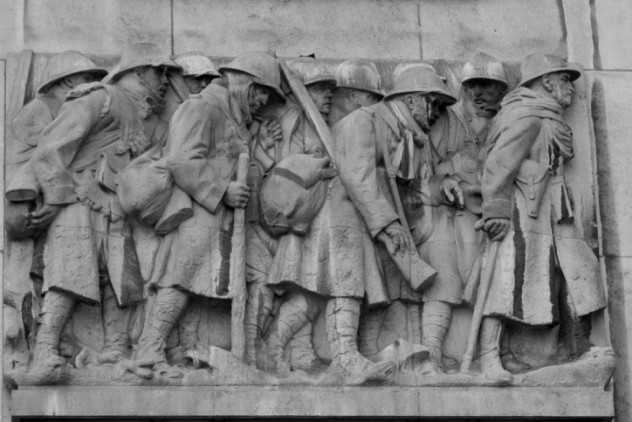
Due to his status as a celebrity scientist, Edison was once asked to help the U.S. Navy prepare for the possibility of large-scale war. They did not ask Edison for his opinion solely when it came to scientific advances, but they also asked for his advice on preparing for war in general, putting him in charge of the Naval Consulting Board in advance of World War I. It is possible that his efforts at helping to industrialize the world marked him as the type of person with the big ideas they were hoping for. However, while he did do his best to put his mind to the task, and he believed we should be prepared for war, he was not the type who believed in creating large-scale weapons of war of mass destruction, and he never put his talents toward making things that could kill people.
In fact, when asked in an interview, Edison once said, “Science is going to make war a terrible thing—too terrible to contemplate. Pretty soon, we can be mowing down men by the thousands or even millions almost by pressing a button.” These words were quite prescient, as the first atomic bomb was dropped to the tune of unimaginable destruction roughly 30 years after Edison’s statement. Edison worked with the Navy on designing apparatus for keeping submarines from being detected and detecting enemy vessels, but he was never interested in creating the true machinery of war.
4Edison Took The Same Risks as His Hired Researchers
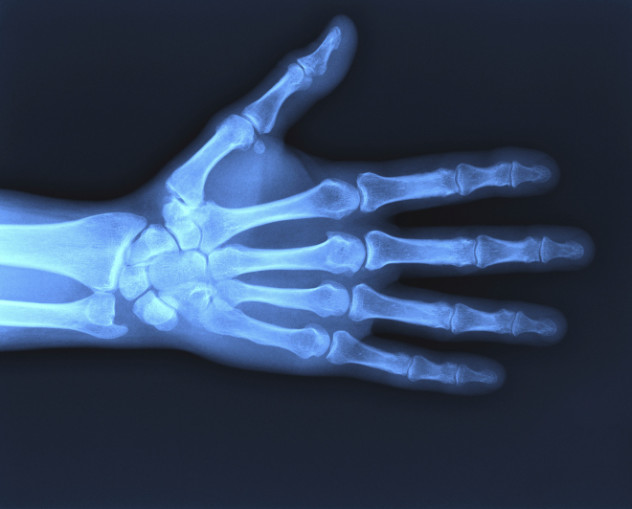
There is an incident in Edison’s life that some people like to point to when they want to paint him as a dastardly villain, and that is the story of Edison’s research into X-rays and the injury of his assistant Clarence Dally. X-ray technology was a total unknown at the time, and like most inventors, he found it hard to shy away from something new that needed discovering. So, Edison and Dally began experimenting with X-rays in the hopes of making the entire process better and more efficient. Unfortunately, their lack of knowledge of the true dangers of the X-ray cost both of them dearly. Dally gained awful burns on his arms and sores all over his body, and he lived several painful years before succumbing to radiation poisoning. He was the first person to achieve this dubious milestone in the U.S.
Edison himself was not unaffected by the radiation. It caused permanent damage to his left eye and to his stomach as well. Edison stopped the experiments after the damage to himself and his assistant and told the press that he was afraid of X-rays. While many people wish to see Edison as a man motivated by profit and nothing else, he did not even attempt to patent his work on X-rays but simply moved on from the project, thinking them too dangerous to mess around with even for a scientist of his experience and caliber.
3He Wanted to Reform the Federal Reserve
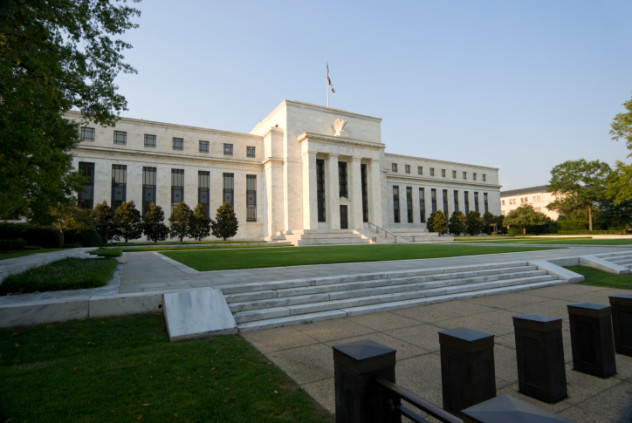
Today, many people decry the Federal Reserve because they say our system is based on nothing more than promises, hopes, dreams, and words. Some people want to go back to when our system was backed by gold because they feel it would make the economy more stable. Other people think that gold was never a good way to back currency to begin with and that something like gold that doesn’t have much practical worth (aside from being a really good conductor) should not be the basis of anyone’s monetary system. When gold was the standard, Edison felt that the system needed a stronger backing than gold. But, unlike some people from his time, his solution was not to switch to another precious metal like silver. Quite the contrary, Edison wanted our money system to be backed by something truly useful and, in his opinion at least, fairly stable and mostly static.
Edison wanted our money system to be based on the output of America’s farmers, who would receive interest-free loans from the government to help them afford to grow their crops. According to experts who analyzed this plan, a few of the most important commodities would basically become money and would act as collateral in loans provided by the government. This would ensure, in Edison’s view, that our money system was backed by something that was “relatively constant” and also something that had real, actual value to the American people. While it’s hard to say if such an idea could actually work, Edison was clearly thinking ahead of his time as it has never been attempted. He would be lauded by many today for wanting a more solid backing for U.S. currency.
While the specifics of Edison’s idea were difficult to implement, a commodity-backed currency would later be proposed by such prominent economists as John Maynard Keynes, Friedrich Hayek, and John Nash.
2Edison Lost Much of His Hearing in a Childhood Accident
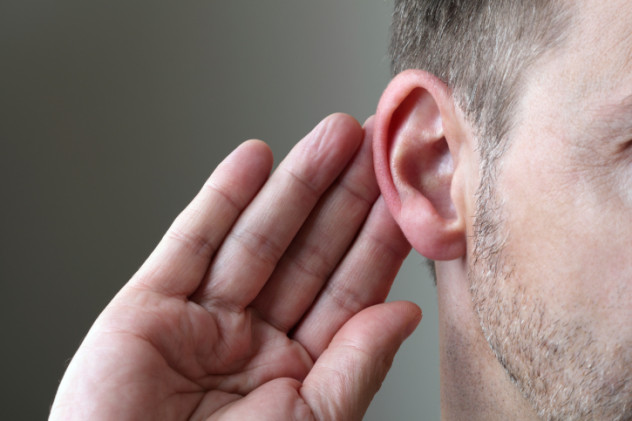
Many people know that Edison was hard of hearing, but it’s a detail often glossed over in favor of other parts of the myth. While many people may not think of it this way, Edison had a severe hearing problem and still became one of the greatest and most lauded scientists of his age. Not only that, but one of his inventions, the phonograph, dealt directly with recording sounds despite the fact the man could hardly hear. A great scientist like Edison overcoming a disability would normally be an inspirational story, but unfortunately, many people today only wish to see Edison as a villain. Of course, while we know he had trouble hearing, even Edison was never clear on how exactly he lost his hearing.
The most likely explanation is that he lost much of his hearing during a bout with scarlet fever when he was a child, but according to Edison himself, his hearing may have been ruined, or at least made worse, by an incident onboard a train. One story claims that Edison got his ears boxed by a train employee, while another story claims he was running to catch a train, and his hearing was damaged when someone helped him onboard by pulling on his ears. While Edison himself changed his story over the years, he was always good-natured about his disability and never let it get him down or stop him from achieving his goals.
1He Had More Empathy Than You Might Think

As we have pointed out, modern-day sources often make Edison out to be a ruthless individual with a moral compass that is always pointing south, but life, in general, is always more complicated than that. Thomas Edison was an inventor and a businessman, and he had faults just like everyone else. But he was not an evil villain cackling and conspiring to destroy others. Like many men, he was competitive, but there is no evidence of him trying to destroy Tesla’s career. Some historians believe his crusade against AC was, to an extent, a genuine belief that it would not be entirely safe for people to use. As Edison believed greatly in creating safety switches to go along with his electronic apparatus, this is not that hard to believe. He was very concerned if any of his researchers became sick while experimenting.
Nowhere was this more apparent than with Clarence Dally. As we mentioned, Dally and Edison both worked on X-rays studying the effects of radium and polonium. The exposure was so bad that Dally ended up losing both of his arms, and he suffered for nearly eight years before he finally died from the radiation poisoning. Edison was greatly upset by all this, which affected his thinking for the rest of his life. He would not go near radioactive materials and advised others against doing so. He also promised to take care of Dally and his family and keep him on the payroll (even when he could no longer work) because Edison felt horrible about what happened. That was despite Dally having had entered into the experiments willingly, and neither of them could have known the danger. Edison may not have been perfect, and he may not have always been the best to his business rivals, but the man certainly had a heart.
